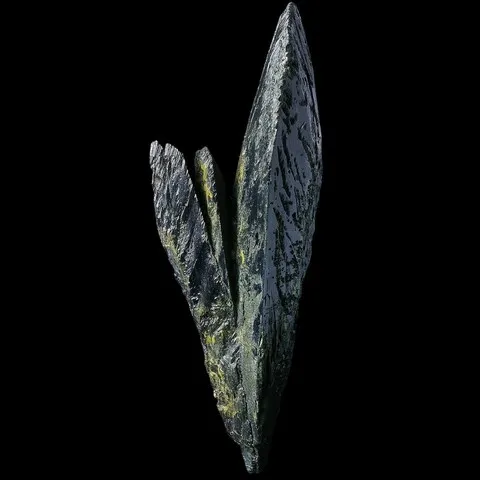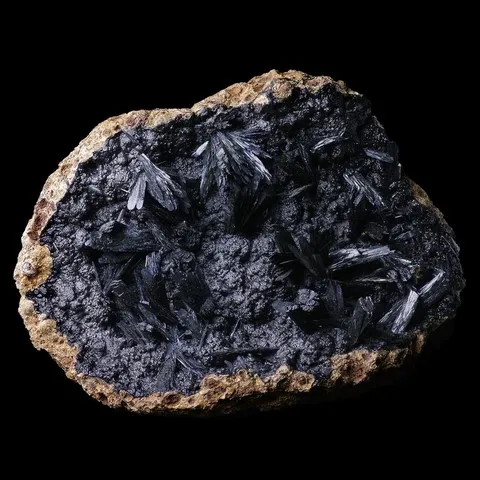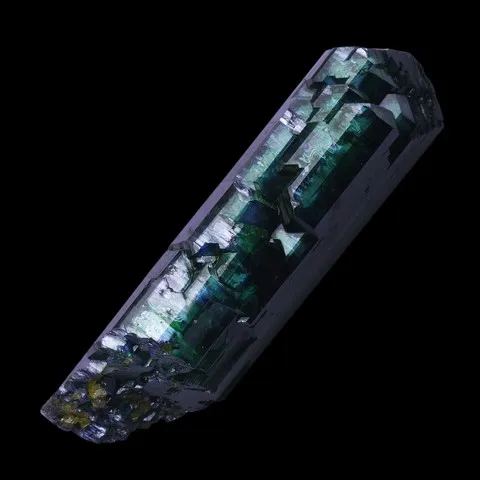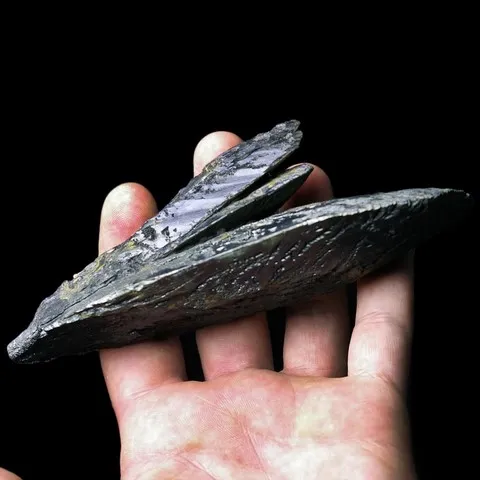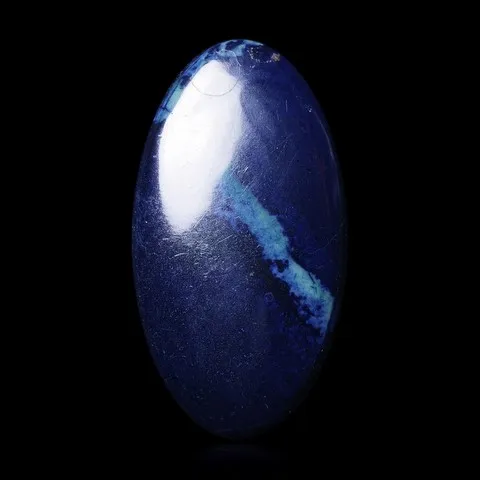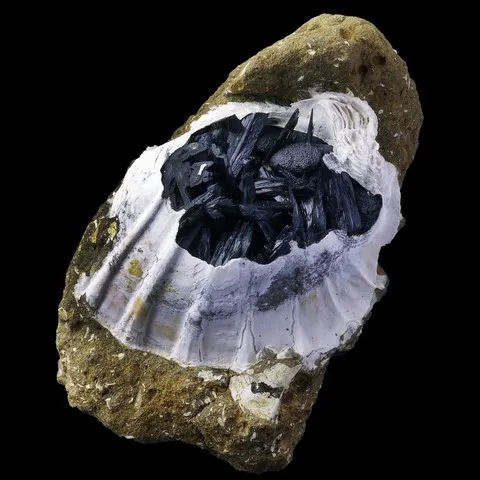VIVIANITE
Class : Phosphates, arsenates, vanadates
Subclass : Hydrated phosphates
Crystal system : Monoclinic
Chemistry : Fe3(PO4)2 . 8H2O
Rarity : Common
Vivianite is the most common of iron phosphates of secondary origin. It owes its name to the English mineralogist John Henry Vivian who discovered it in English Cornwall at the beginning of the XVIIIth century. Vivianite is formed in oxidation zones of sulfide deposits, in pegmatites as a mineral resulting from the alteration of iron phosphates, in coal mines or in phosphorus-rich sedimentary deposits. It often crystallizes in elongated prisms sometimes grouped in rosettes. It is also found in tabular crystals, fibrous masses or bright blue encrustations. It has a characteristic perfect cleavage that disintegrates it into flexible blades and a low hardness that allows to scratch with the nail. Dark green when it is recently extracted, its exposure to the air usually causes a blue color variation by oxidation of ferrous iron and a transformation in other iron phosphates (pseudomorph) which opacify it completely. Its conservation in collection result in some problems. Because of its attractive green color, vivianite is a sought after mineral for collectors, however it is not used in any particular field and it is rarely cut for jewelry.
Vivianite in the World
Vivianite in France
In France, vivianite is known in centimetric crystals in the upper levels of the Salsigne gold mine (Aude) and centimetric gemmy crystals in the Commentry (Allier) coal mines.
Twinning and special crystallization
Vivianite crystals twinned on {010}, according to its main cleavage plane, which often makes it difficult to detect.
Due to its sometimes sedimentary geology, it is not uncommon to find some fossils partially transformed into vivianite, the best example is probably the bivalves of Kerch in Ukraine.
Photo on the right : Vivianite on bivalve fossil from Kerch Mine, Crimean Peninsula, Ukraine
Hardness : 1.5 to 2
Density : 2.68
Fracture : Fibrous
Trace : White, blue, brown
TP : Transparent to opaque
IR : 1.579 to 1.675
Birefringence : 0.050 to 0.059
Optical character : Biaxial +
Pleochroism : Blue, green, yellow
Fluorescence : None
Solubility : Acids
Magnetism : None
Radioactivity : None

